All products featured are independently chosen by us. However, SoundGuys may receive a commission on orders placed through its retail links. See our ethics statement.
How do speakers work?
May 30, 2025
Although there have been significant advances in both speaker design and manufacture, the fundamentals of speaker driver technology haven’t changed in close to 100 years: Edward Kellogg and Chester Rice’s 1925 dynamic driver is still the basis of practically every loudspeaker on the market today, from the one in your phone to those in your home theater system.
But how do speakers work? Let’s start with the basics.
- This article was updated on May 30, 2025, to clear up formatting, move links.
- This article was updated on May 13, 2024, to improve readability and add more technical information.
- This article was originally published on March 12, 2021.
How speakers work: the basics
A speaker driver is the raw electroacoustic component that makes a loudspeaker work. As a transducer, its function is to transform energy from one form to another. Specifically, this transducer transforms the amplified electrical waves from your playback device, be that your phone or your turntable cartridge, into sound pressure waves in the air for your ears to detect.
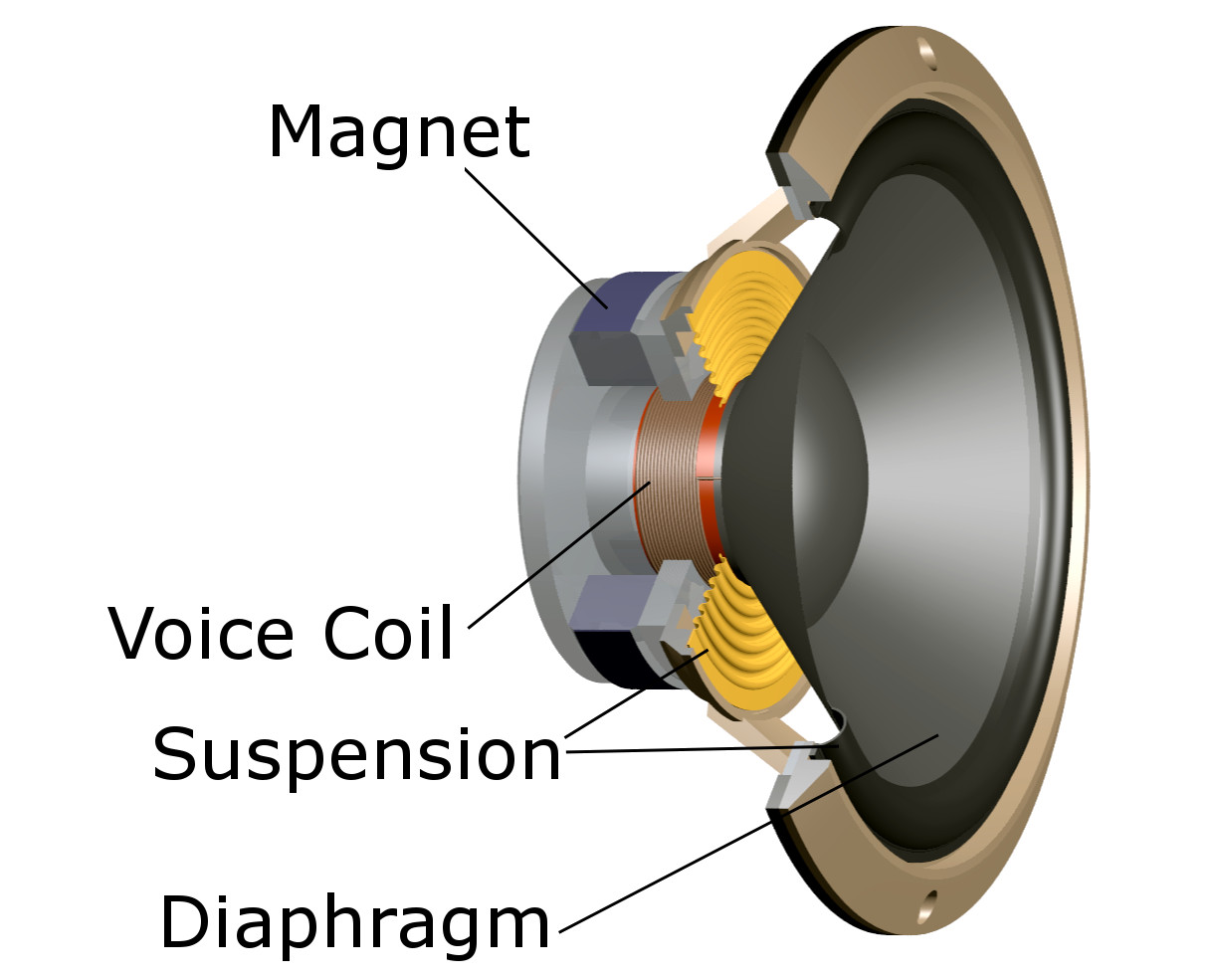
The speaker driver: a simple yet brilliant electromagnetic motor
| Part of the Speaker | What does it do? |
|---|---|
Magnet | All loudspeakers have electromagnets that create a circular gap within which the voice coil and diaphragm move. It is the interaction of these constituent parts that generates sound. |
Voice Coil | A cylindrical coil of wire suspended between the poles of the speaker's magnet. When current is applied to the voice coil, it vibrates within the magnetic gap caused by the two poles of the speaker's magnet. This causes a corresponding movement of the diaphragm, which ultimately produces sound. |
Suspension | A device that keeps the voice coil centered in the magnetic gap by allowing the coil to move freely within the gap without being overly pulled to one pole or the other. |
Diaphragm | A light, cone-shaped membrane made of thin plastic or metal that converts the electrical vibrations of the voice coil into sound pressure waves that your ear can detect. When the voice coil moves, it generates air pressure that vibrates the diaphragm and produces sound. |
An amplifier feeds a signal to two terminals on the back of a speaker. These terminals then pass the current into a cylindrical coil of wire, which is suspended in the circular gap between the poles of a permanent magnet. This coil moves back and forth inside the magnetic field as the current passing through it alternates in direction with the signal applied, per Faraday’s law. The center of the speaker cone is attached to one end, which gets driven back and forth by the moving coil. This cone is held at its edges by an airtight suspension or surround. As the cone moves, it pushes and pulls the surrounding air, creating pressure waves in the air called sound.
So that’s how the speaker driver works, but why do they always seem to be mounted in boxes? If the driver makes sound by itself, what’s the box for? And what about port holes and those other bits and pieces?
Why are speakers mounted in boxes?
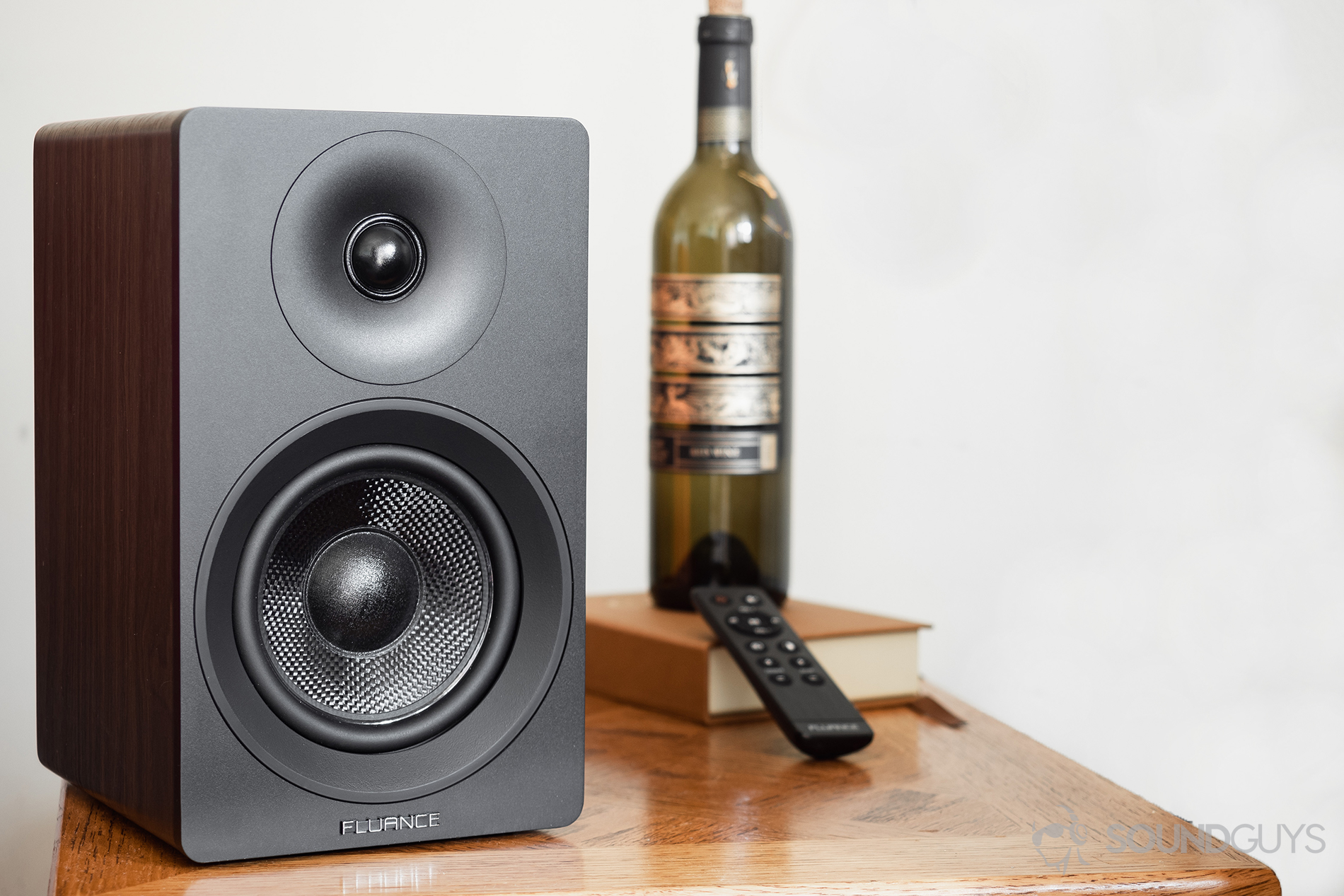
As a speaker driver’s cone moves, it creates a pressure wave from both the front and from the back. As it moves towards you, pushing the air and creating a positive pressure, it simultaneously pulls the air behind it, creating negative pressure. If the wavelength that corresponds to the frequency of the reproduced signal is large relative to the size of the driver, the pressure generated by the two sides of the driver will effectively cancel each other out. So at any useful distance, the low frequencies (bass) are rendered inaudible. If you want to try this at home, remove a driver from its enclosure. You’ll notice a “tinny” sound quality compared to how the speaker sounded when assembled.
For a speaker to function well at all frequencies, we must prevent the pressure wave created by the back of the speaker cone from canceling out the wave created by the front of the cone. If you were to mount the driver in a large, rigid sheet of material (a baffle), you could achieve the same effect. A baffle needs to be large to prevent low-frequency cancellation, so this is impractical in most applications. Closed boxes allow a more practical way of doing this.
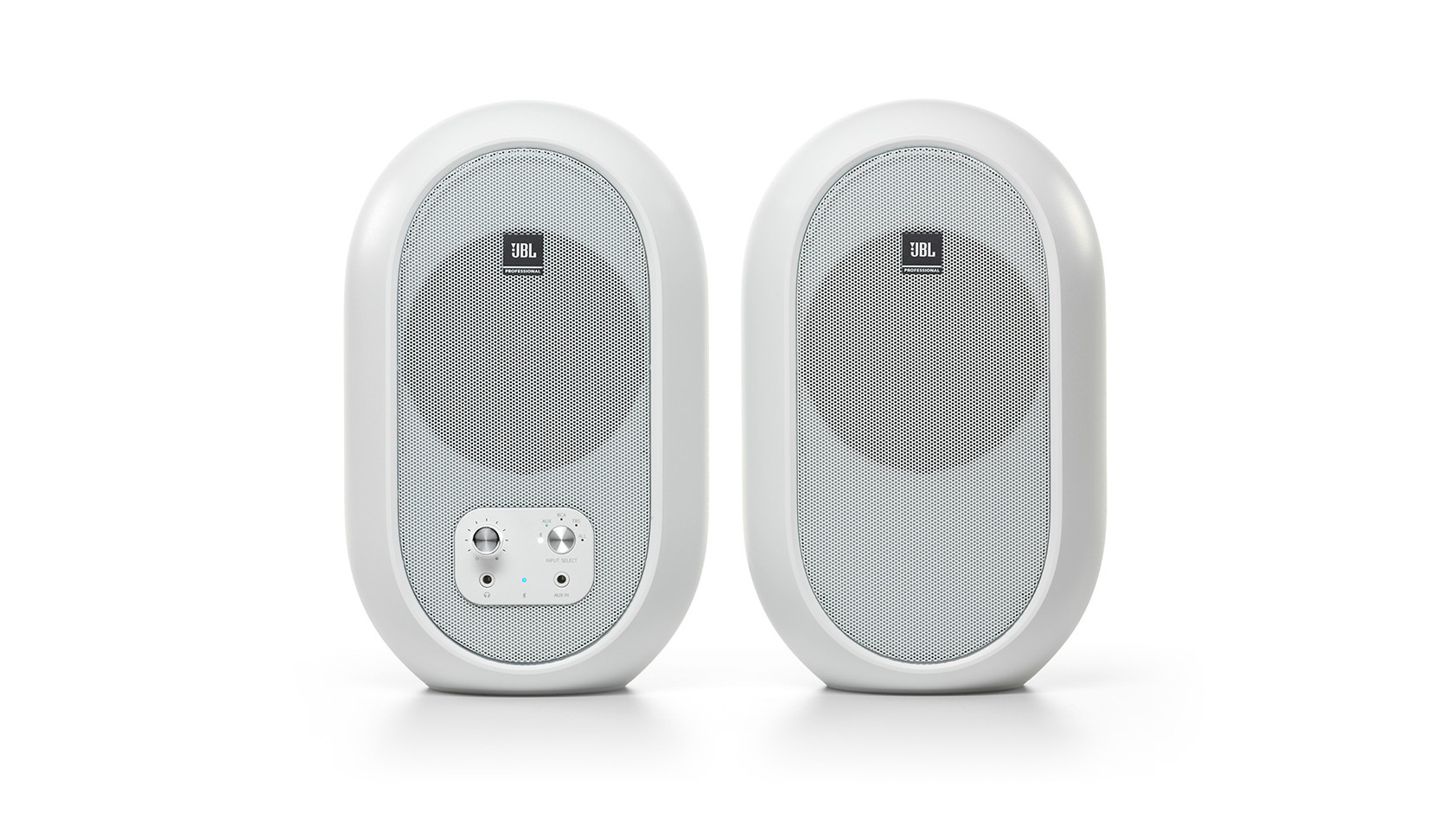
A combination of the mechanical properties of the driver and the size of the box define the low-frequency behavior of an assembled closed-box loudspeaker system. Without getting super technical, the air in the box acts like a spring that the cone pushes and pulls against, and that system has a resonant frequency below which its output drops off considerably.
Loudspeakers must be airtight: leaks in the box allow the cancellation we want to avoid.
Why do some speakers have holes in them?
You may have noticed many speaker boxes have circular holes, or sometimes slots, usually in the front or back. What you see are ports or vents, which identify what is known as a bass reflex enclosure.
A bass reflex enclosure works essentially the same way as when you blow air over an open beer bottle, and a note sounds. The note changes with the amount of liquid in the bottle because the volume of air inside the bottle changes. If you were able to stretch the glass neck of the bottle, that would change the note too. A resonant system can be tuned by adjusting the port dimensions (the bottle’s neck) or the enclosure (bottle) volume.
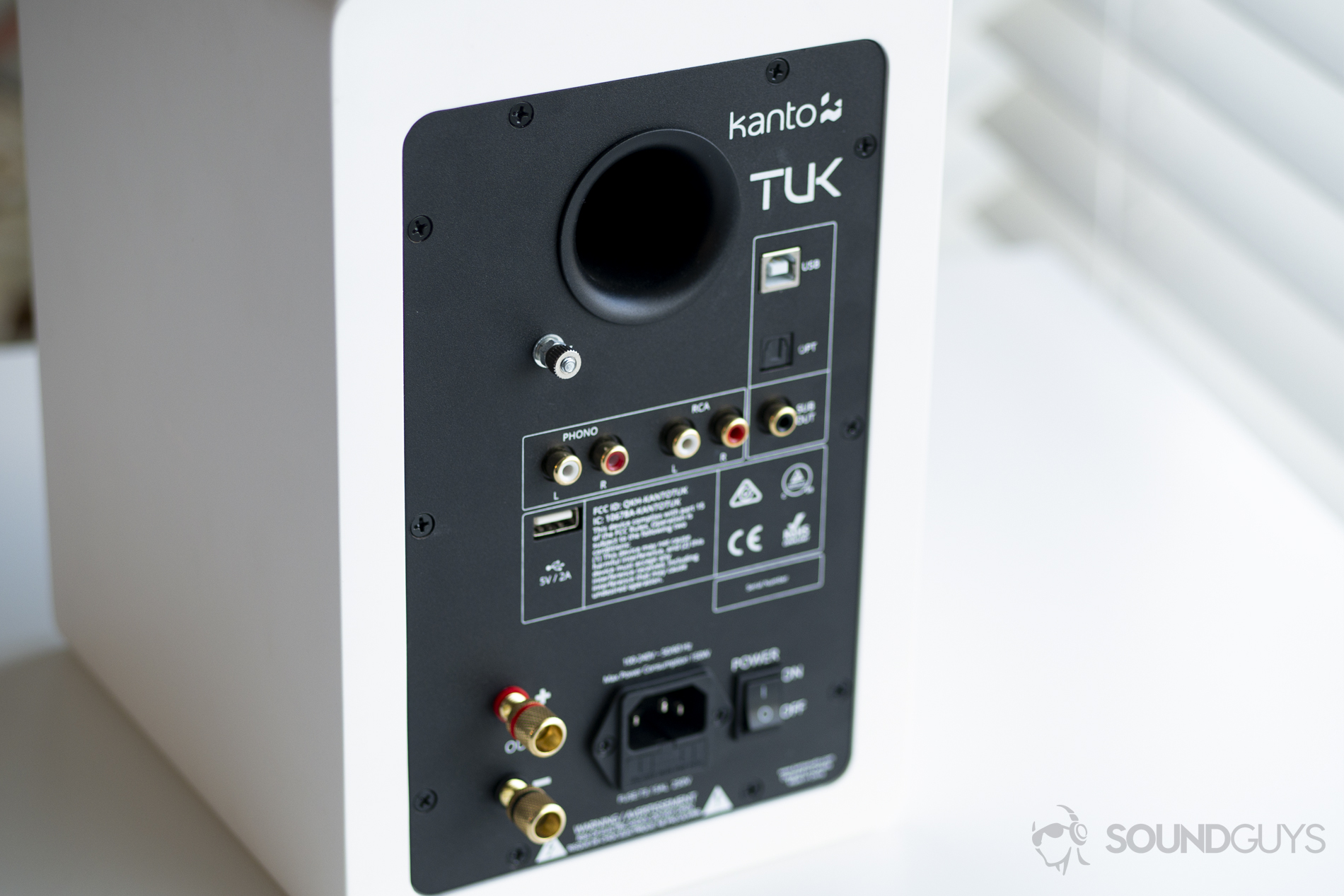
If tuned correctly, this creates a resonance just below the point at which the loudspeaker response would normally roll off, effectively extending the system’s bass performance. To work correctly, the port tuning is calculated for the specific driver in the enclosure. If you swap out the driver for a different type, even if it is the same cone diameter, the box, and port tuning will no longer be appropriate, and it won’t sound right.
Loudspeakers that use passive radiators work on the same basic principle but with a mass-loaded, unpowered speaker cone, creating the bass resonance with the enclosed air volume.
Tweeters and woofers
Now, you may have noticed that in most loudspeakers, particularly as they get larger than little portable boom boxes, you can see more than one speaker driver—usually a smaller diameter one atop a larger one.
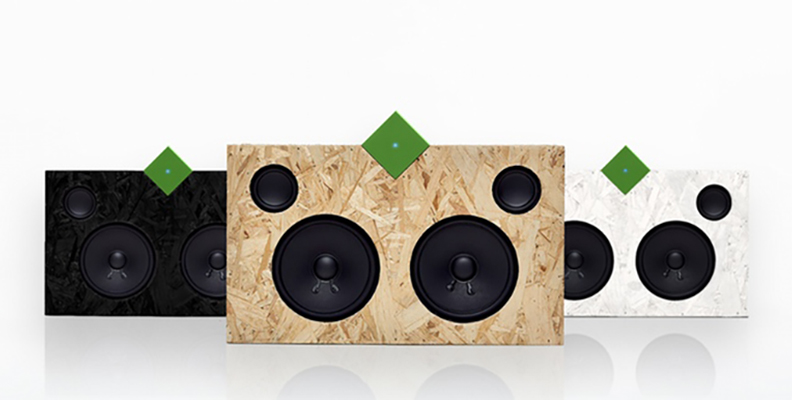
There are several reasons why speakers use multiple drivers in different sizes. While it is true that a single driver can cover almost all the audible spectrum by itself, there are a number of limitations it runs up against. If the driver is small it can’t move much air and will struggle to generate bass at a useful level.
Larger drivers can move more air, but the problem is that speakers become more directional as the frequencies they are reproducing go up. This is known as beaming.
As frequency increases, the associated wavelength decreases; speaker drivers usually start beaming at a frequency with a wavelength equal to the diameter of the radiating cone. This means you’ll only hear the higher frequencies if you’re right on the axis with the speaker. It doesn’t make for a balanced sound or a good speaker. The simple solution is to use different sizes of drivers with each one tailored to reproducing a specific range of frequencies—different parts of the audible spectrum (bass and treble, or bass, middle, treble).
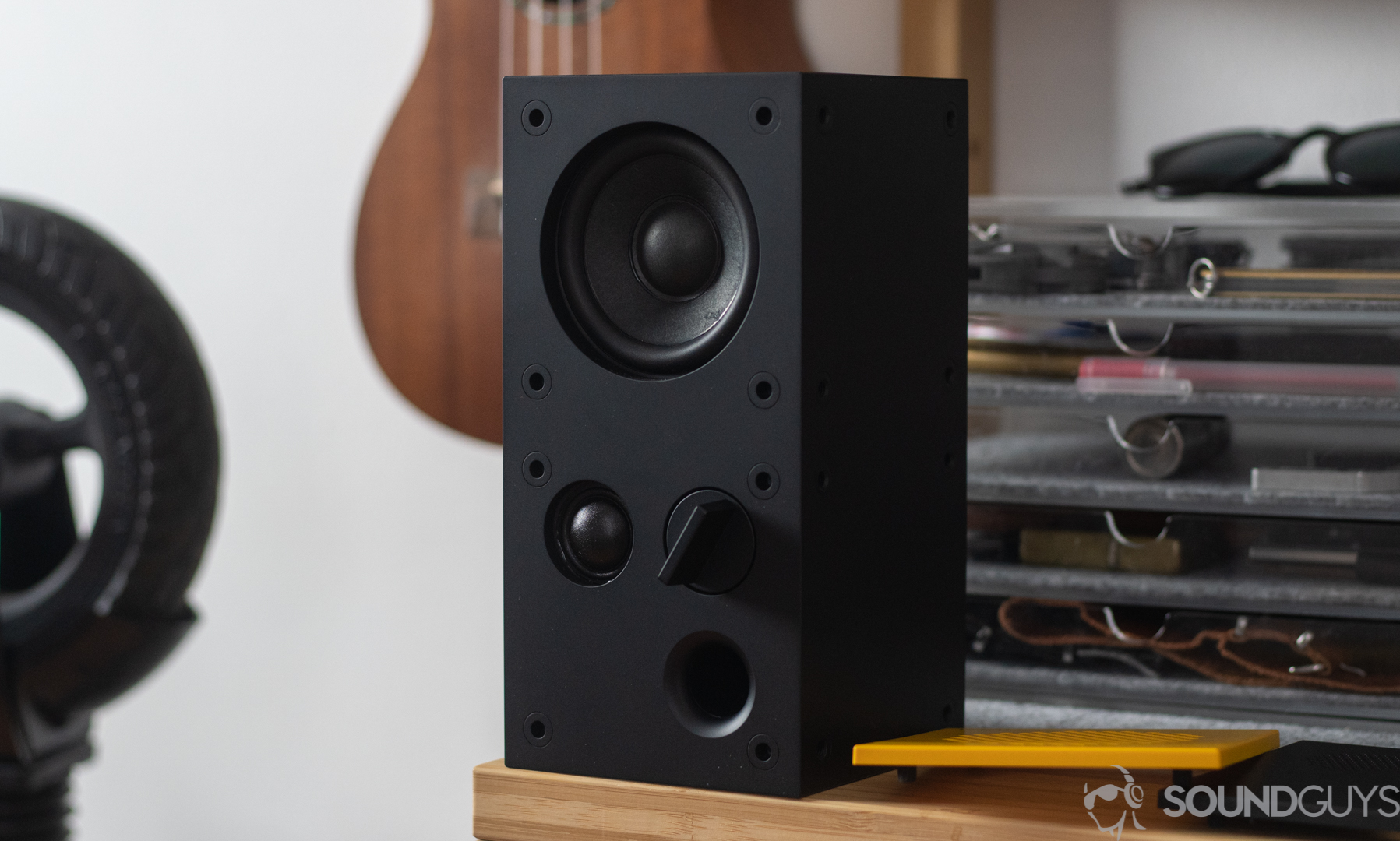
This concept works in tandem with a frequency-dividing network in the speaker box called a crossover. A crossover delegates the right frequency range to each driver type: tweeters for the highs and woofers for the lows.
Why it’s worth knowing how speakers work
You don’t need to know the science behind speakers to be able to listen to and enjoy them. But if you intend to spend serious dough on audio equipment, it’s always a good idea to first equip yourself with some knowledge. A little base knowledge will help you understand why certain design decisions were made, how they influence the sound, and to help you identify snake oil salesmen.
Knowing how speakers work can also help you diagnose problems. And if this article has you interested to learn more, there are plenty of resources online where you can learn how to build them yourself from readily available parts.
Frequently Asked Questions
In general, wireless Bluetooth speakers generate sound in the same way as any other loudspeaker. The only difference is that a Bluetooth speaker contains a Bluetooth receiver, which receives audio data from your wireless device via radio waves. This data is processed by a digital signal processor, or DSP, which controls the frequency and volume of the sound that gets put out. For more information on Bluetooth speakers, including how different Bluetooth profiles affect the sound of your audio device, check out our guide here!
The fundamentals of speaker technology have remained virtually unchanged for close to 100 years. As such, it is generally easy to build your own speakers out of even the most rudimentary materials. There are plenty of resources available online where you can learn to build speakers out of ready-made kits or even basic household materials!
A speaker is a type of transducer. In essence, it converts one form of energy — in this case, mechanical vibrations generated by electricity — into another — sound energy. All a speaker does is cause a magnetic coil to vibrate, thus moving a membrane that generates sound. Sound thus does not ”get” to a speaker. Rather, it is generated in particular patterns and at particular intensities depending on the strength and variation of electrical input.
Thank you for being part of our community. Read our Comment Policy before posting.